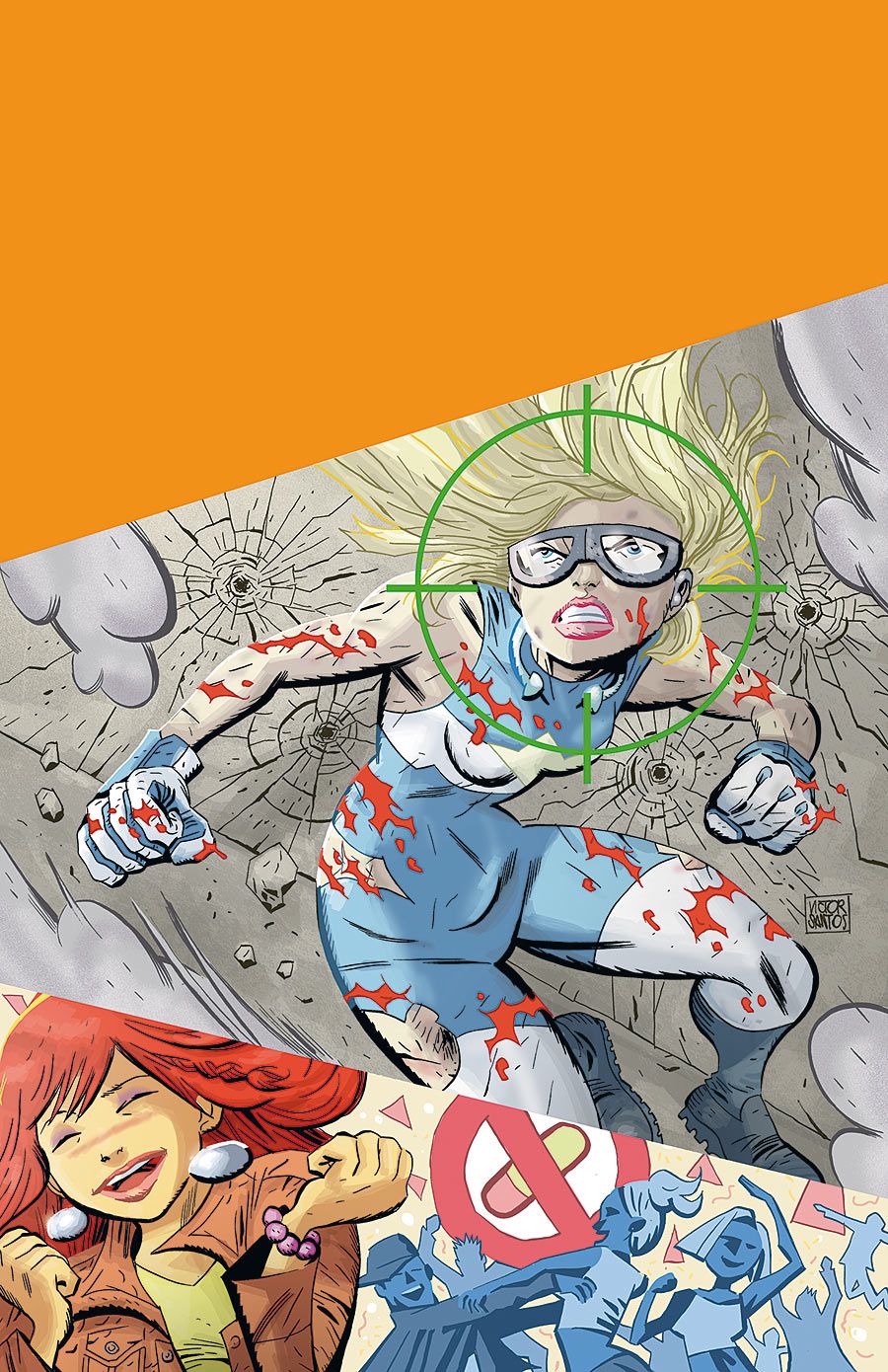The more I read of Bryan J.L. Glass and Victor Santos's "Furious" #2, the more I like it. This is a comic that at first seems to be very familiar -- a mixture of superheroics and today's pressures of child stars growing up in front of the cameras -- but the closer you look at its pages, the more clever it becomes.
The basic premise, of tabloid-target former child-star Cadence Lark becoming a superhero dubbed Furious by the media, is instantly relatable. We've all seen the different stars who spent so much time in front of the lens that it appears to have pushed them over the brink. With Cadence, who's using her new superpowers and trying to get everyone to call her the Beacon, you can see that playing out all over again. And just like the majority of those attempting a comeback, the reality is much harder than the idea behind it.
What makes "Furious" #2 work, though, is that it operates under a mixture of psychological and physical issues. We get to see a lot of Cadence's past in "Furious" #2, and the immense pressure that was put on her shoulders before she was really old enough to manage it is an obvious factor in making her who she is today. As someone who was pushed into corners her entire life, watching her smashing forward in ways she was never allowed to makes perfect sense.
At the same time, though, Glass makes "Furious" more than just someone's mental state fueling the rage. I like that Glass has been exploring the kinetic energy powers that Furious holds, and how it's something that she's still learning about even as she uses them. Her need to expend the absorbed energy also clicks into the story perfectly; it's not just that she wants to start smashing things, it's that she more or less has to in order to stay functional. The two sides of that coin that make up Cadence -- needing to lash out both emotionally and physically -- create a perfect storm that can't be contained. By working together, we end up with something fairly sharp.
I like Santos's art a lot, too. I never read "Mice Templar" (which he and Glass also collaborated on), but the visuals here are fun. It's a breezy sort of art style where the square-jawed figures still have a certain light and energetic look about them. The storytelling is good, and it's easy to follow. It's at its best in the more violent scenes, though. When Furious is shot in the head, the slow tracking of her body falling even as it's surrounded by other panels is drawn really well. The shifting back and forth, the way that Santos has the time dilation transfer to the page, the reactions to those around her, the splatter of ink on the background. Even the posture of Furious is good here, with her body in mid-step so that she doesn't appear frozen or posed. And later, when there's big violent scenes, Santos knows exactly how much to show us; just enough that we can understand what's happening, but not so much that it's gruesome.
"Furious" #1 was off to a good start, but with "Furious" #2 I feel like this series has clicked fully into place. Glass and Santos' creation is very much a superhero for our time. Mixing our obsession over media figures with a smart application of superpowers, "Furious" #2 is confidently moving forward. "Furious" may only be a mini-series, but at the rate it's going, I'm finding myself hoping for more before long. Good stuff.

